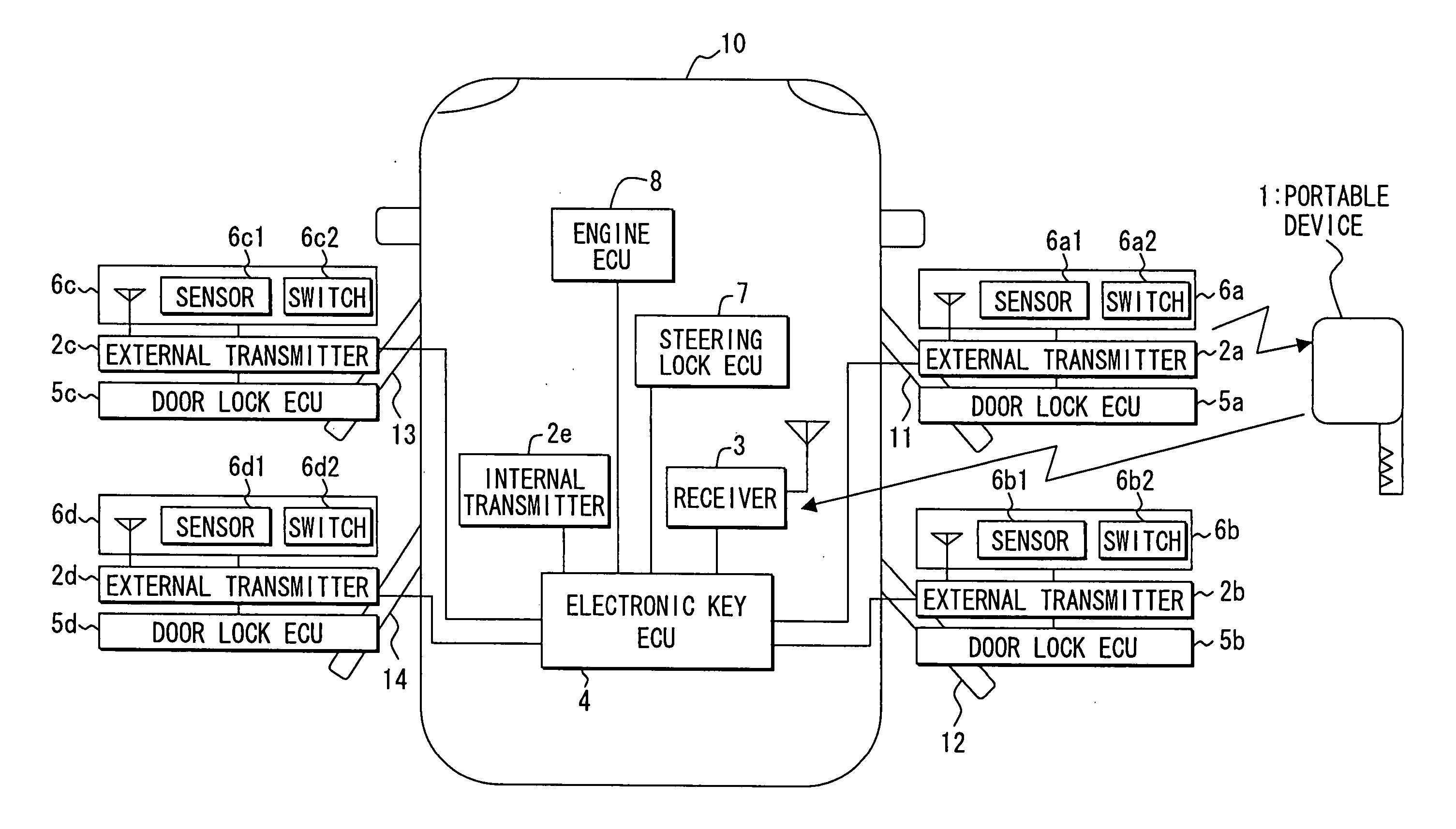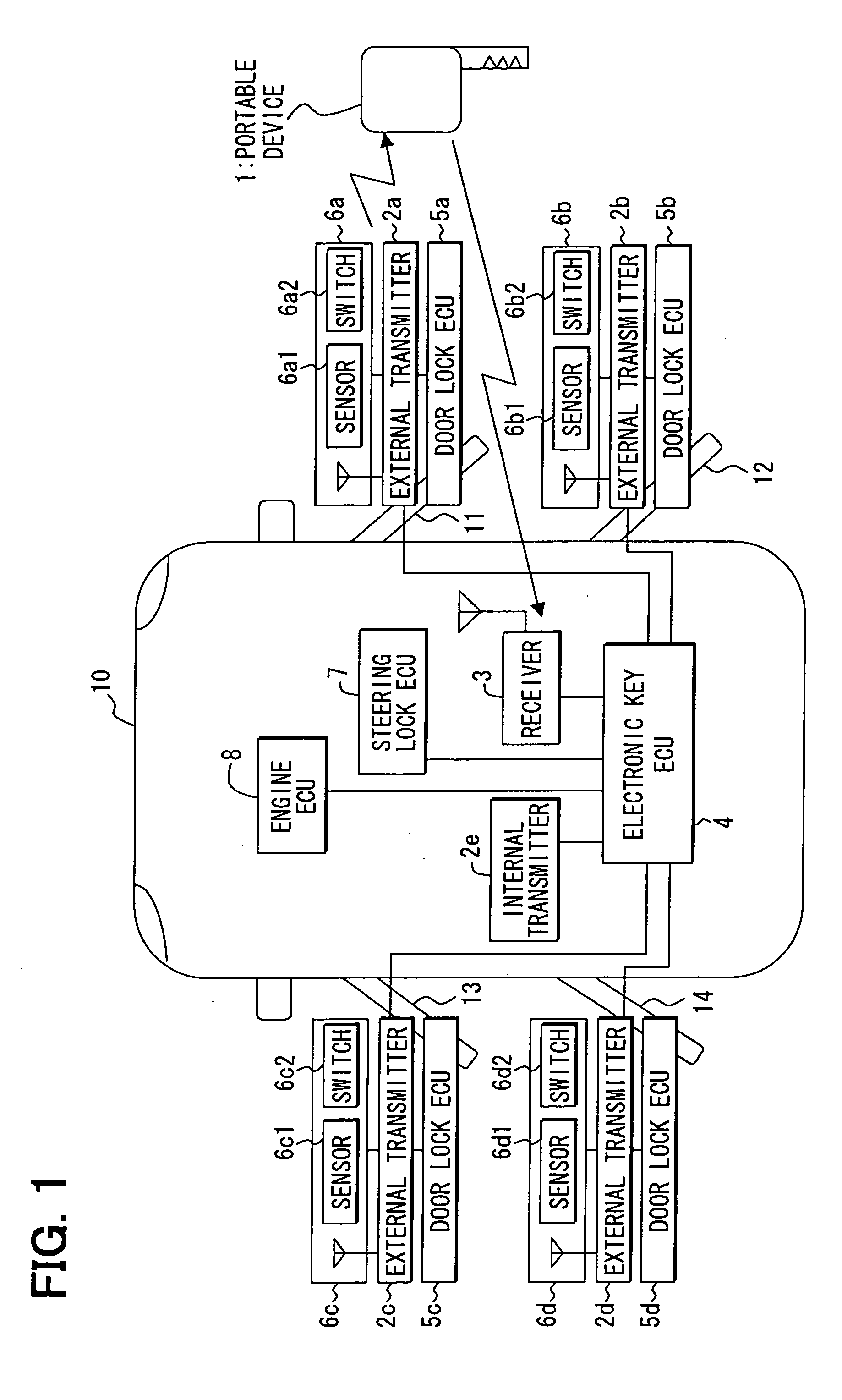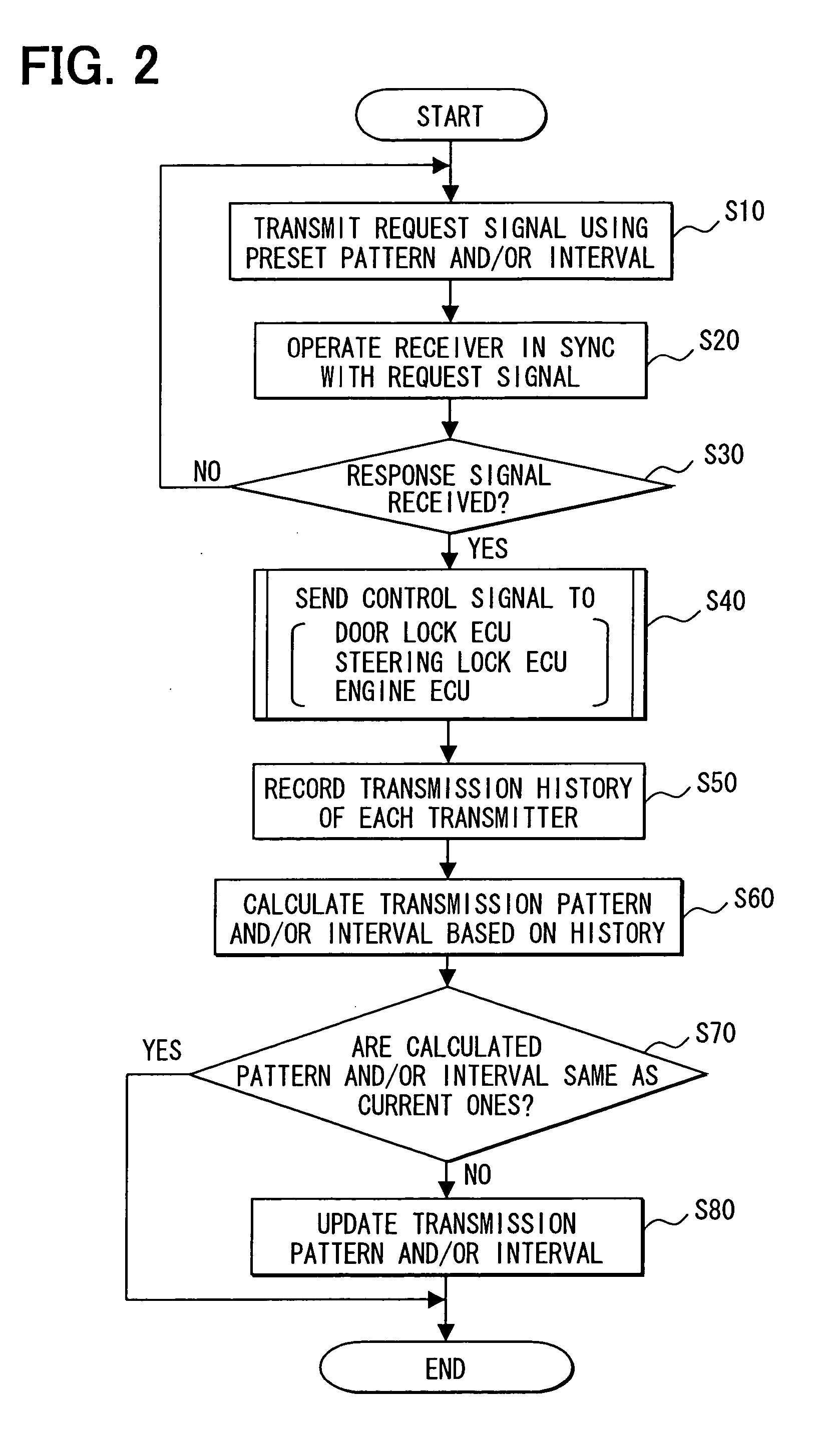Remote control system
a remote control and door lock technology, applied in the field of remote control systems, can solve the problems of reducing the operability of affecting and affecting the operation of the door lock system, so as to facilitate the operability of the portable device and suppress energy consumption
- Summary
- Abstract
- Description
- Claims
- Application Information
AI Technical Summary
Benefits of technology
Problems solved by technology
Method used
Image
Examples
first embodiment
[0032] the present invention is described with reference to the drawings.
[0033]FIG. 1 shows a block diagram of a door lock system in the first embodiment. The door lock system includes a portable device (an electronic key) 1 and an electronic key ECU 4 to control lock / unlock operation of the door locks in each door based on a bidirectional communication for transmitting an ID code. The electronic key ECU 4 also controls steering lock condition and engine operation for improved security of an automobile 10.
[0034] The door lock system also includes a receiver 3 for receiving signals from the portable device 1 and is electrically connected to a steering lock ECU 7 and an engine ECU 8 as shown in FIG. 1.
[0035] The automobile 10 includes external transmitters 2a to 2d in doors 11 to 14 and an internal transmitter 2e in an inside of the automobile 10. The transmitters 2a to 2e transmit a request signal based on a transmission signal from the electronic key ECU 4. The electronic key ECU ...
PUM
 Login to View More
Login to View More Abstract
Description
Claims
Application Information
 Login to View More
Login to View More - R&D
- Intellectual Property
- Life Sciences
- Materials
- Tech Scout
- Unparalleled Data Quality
- Higher Quality Content
- 60% Fewer Hallucinations
Browse by: Latest US Patents, China's latest patents, Technical Efficacy Thesaurus, Application Domain, Technology Topic, Popular Technical Reports.
© 2025 PatSnap. All rights reserved.Legal|Privacy policy|Modern Slavery Act Transparency Statement|Sitemap|About US| Contact US: help@patsnap.com



